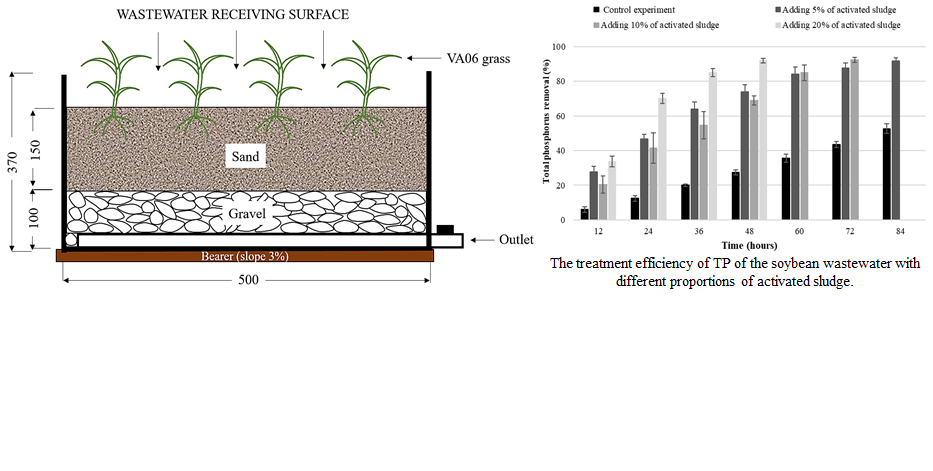The Combination of Activated Sludge and A Constructed Wetland for Treating Soybean Wastewater
Main Article Content
Abstract
Soybean is a nutritious and popular material in the Vietnamese food industry. Soybean processing wastewater contains a significant amount of organic compounds, which have a negative impact on aquatic life due to light penetration and oxygen consumption limitations. Therefore, this study was carried out to determine whether the combination of activated sludge and a constructed wetland using VA06 grass could be effective in treating soybean wastewater. Various amounts of activated sludge were investigated. To be specific, a 20% additional sludge percentage resulted in the shortest treatment time for chemical oxygen demand (COD), total nitrogen (TN), and phosphorus (TP). Additionally, the treatment time was gradually increased by adding smaller volumes of sludge (5% and 10%). Furthermore, the experimental model combining activated sludge and the constructed wetland showed a high treatment efficiency of 97.29% for COD removal, 67.52% for TN removal, and 91.61% for TP removal. Finally, the growth of VA06 grass rose from 41 cm to 80 cm, demonstrating that VA06 grass was adaptable and could be applied to treat soybean wastewater.
Article Details

This work is licensed under a Creative Commons Attribution-NonCommercial 4.0 International License.
Published articles are under the copyright of the Applied Environmental Research effective when the article is accepted for publication thus granting Applied Environmental Research all rights for the work so that both parties may be protected from the consequences of unauthorized use. Partially or totally publication of an article elsewhere is possible only after the consent from the editors.

